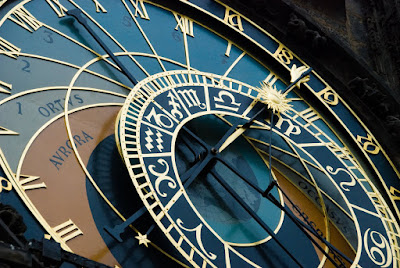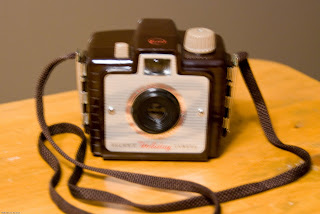
Got home late last night from an intimate concert with
Martyn Joseph. My good friend Trent, was at a song writing workshop with Martyn and got to know him on a personal level. Martyn was coming over for a concert in Calgary and Trent asked if he would play for a group of about 50 friends. What an amazing evening! Good food, connecting with friends, and listening to an incredible musician. Martyn shared that he'd once had a review where the critic said, “Martyn Joseph makes Leonard Cohen sound like Julie Andrews.” OK, maybe his voice isn't the best, but he is a brilliant song writer and can he play the guitar. Amazing!
When I wrote,
My Gear Pt. I, it was from the perspective of the decisions that I made in the fall of 2007 as I prepared for travel photography. In this post I will finish the discussion around the gear that I have purchased since our trip to Europe, and will conclude with what I would purchase if I was going to buy a digital SLR camera today.
I was very pleased with the gear that I purchased for our trip to Europe. You can view the best of my Europe pictures on my website at
www.scottjantzenphotography.com. Most of my shooting was outside during the daytime, so I rarely had need for anything other than my Nikkor 18-200 mm VR lens. When we were at the
Willie Clancy Traditional Music Festival in the dark pubs of Miltown Malbay in Ireland, I switched to my 50 mm f/1.4 and was able to take reasonable pictures with available light. One other piece of equipment that I purchased before our trip was a Nikon SB-24 Speedlight (from eBay for $70) and a set of
Cactus wireless triggers, which I lugged all over Europe. I was very glad that I did for the one occasion when I really needed them, which was our evening Greek Feast with Thia Popi (Aunt Popi, portrait above) and Theo Nikos (Uncle Nikos). I've been an avid follower of
Strobist, which is a blog dedicated to teaching photographers how to use small portable flash units, triggered off camera in order to create photos with dramatic lighting. Highly recommended!
Since getting back from our trip, I have been working at rounding out my photo equipment so that I can make better portraits with “interesting lighting” as opposed to the very flat, mug-shot type photos that you get with on camera flash photography. I've purchased a second flash, a Nikon SB-28 (again from eBay for $100), a light stand, umbrella, rechargeable batteries, gels to control the colour of the light from the flash, and a few other lighting tid-bits. I bought most of my stuff in a "strobist" kit through
Midwest Photo Exchange. They were great to deal with, even for cross-border shopping. I also bought a
Nikkor 85 mm f/1.8 lens, which is fast, bright and great for portraits where you have some room to work. I can get in nice and close to people's faces without being in their personal space like I would if using the 50 mm.
That's pretty much it for my collection of gear that I currently use. There is nothing that I have in my collection that I don't use on a regular basis and I don't regret any of the purchases that I've made. I think I did the best I could with the dollars available and the information at hand. That being said, if I were purchasing today instead of a year and a half ago, I'd buy the
Nikon D90. The reason is the amount of noise that I get in blue skies and other similar dark even spaces with my D80. It is not a problem for normal photography, but the standards for
iStock submissions are getting so stringent that it is getting harder and harder to get an image accepted. The quality of the sensors in Nikon cameras has improved dramatically over the past year and this has been incorporated into the D90. The D90 also still fits all of my original requirements that make for a great "travel" SLR camera. The other fantastic thing about the D90 is that it takes video! I'll link to
Chase Jarvis where he shows a video demo of the D90, very cool. That's it for now. I'd be curious to hear your comments about the choices I've made and your experiences. Just click on the “Comment” button below. I've had a report of difficulty leaving comments. If that's your experience, please send me an email so I know.


 This past week I took a series of photographs to demonstrate how using off camera flash can be used to create much more dynamic and interesting lighting for portrait photos.The first photo was of Bailey, sitting in a stairwell with cool, late afternoon light coming through the windows and harsh fluorescent lighting from above. I took the photo on program mode where the camera chose the shutter speed and aperture. As you can see the shutter speed was too slow resulting in a slightly blurred image.
This past week I took a series of photographs to demonstrate how using off camera flash can be used to create much more dynamic and interesting lighting for portrait photos.The first photo was of Bailey, sitting in a stairwell with cool, late afternoon light coming through the windows and harsh fluorescent lighting from above. I took the photo on program mode where the camera chose the shutter speed and aperture. As you can see the shutter speed was too slow resulting in a slightly blurred image.

 I then shot the flash through a white umbrella, to create a much bigger light source. (OCF Principle #1: The bigger the light source, the softer the light) Note how the shadow from the arm of Bailey's glasses is reduced and the light has softened and is much more flattering. Much better.
I then shot the flash through a white umbrella, to create a much bigger light source. (OCF Principle #1: The bigger the light source, the softer the light) Note how the shadow from the arm of Bailey's glasses is reduced and the light has softened and is much more flattering. Much better.








































